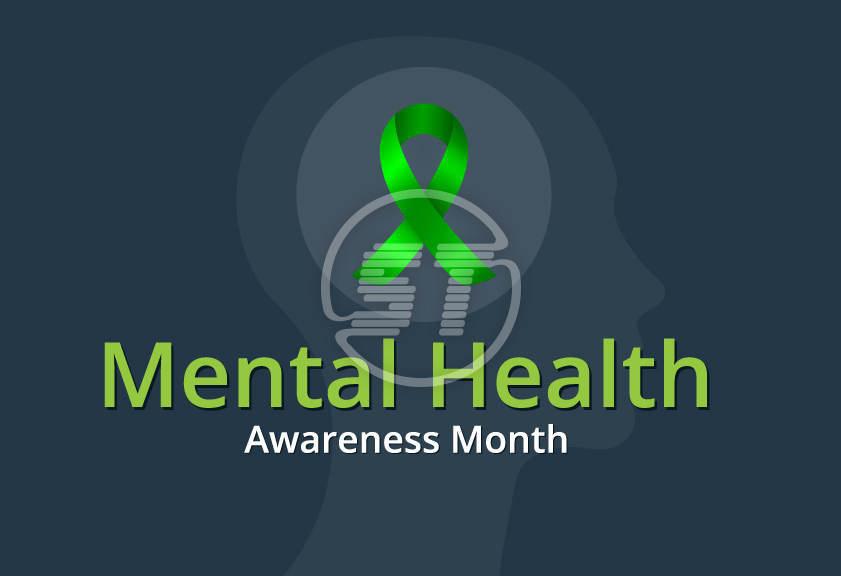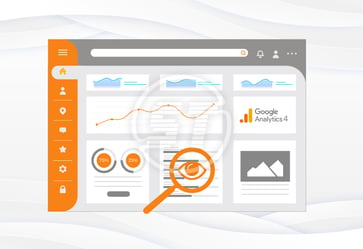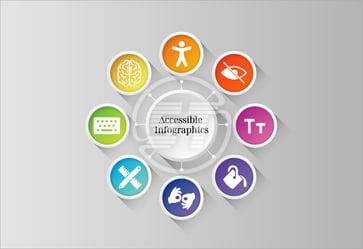May is the month to observe mental health awareness, an opportune time to shed light on the intersection of mental health disabilities and digital inclusion. In an increasingly digital world, ensuring accessibility for individuals with mental health disabilities is essential. By understanding their unique needs and implementing inclusive measures, fostering a more equitable and supportive online environment is possible.
Mental health disabilities encompass a broad spectrum of conditions, including anxiety, depression, bipolar disorder, schizophrenia, and more. These disabilities can significantly impact an individual’s cognitive, emotional, and behavioral functions, posing challenges in various aspects of life such as digital interactions.
Digital accessibility is crucial for people with mental health issues!
The National Institute of Mental Health (NIMH) says, as of 2019, approx. one in five adults in the United States was suffering from some sort of mental illness. In short, 51.5 million people were experiencing mental issues diagnosed as mild, moderate, or severe.
Research also suggests that post COVID there are myriad mental health apps available to the public, however, they are not accessible to everyone. Unfortunately, many websites and digital tools have been developed without focusing on accessibility requirements, creating difficulties, and preventing individuals with mental health disabilities from using them.
Nevertheless, organizations have started considering WCAG requirements to incorporate in their web designs. Several employers are also offering mental health apps to monitor and safeguard their employees' wellness. However, the primary requirement for such apps is to be made accessible so that people can use them.
Navigating apps, digital platforms, and technologies can be daunting for individuals with mental health problems. Some of the challenges for them are:
Cognitive Overload
Complex interfaces, excessive information, and rapid changes can overwhelm individuals with cognitive impairments, making it difficult for them to focus or process information effectively.
Social anxiety
Social media platforms and online communication tools can exacerbate feelings of social anxiety and isolation, leading individuals to avoid digital interactions altogether.
Accessibility barriers
Inaccessible websites, apps, and digital content further marginalize individuals with mental health disabilities, hindering their ability to access essential services, information, and opportunities.
Stigma and discrimination
Stigmatizing attitudes and misconceptions surrounding mental health may deter individuals from seeking support or engaging in online communities, perpetuating feelings of exclusion and alienation.
Strategies to improve the digital environment experience for everyone!
Enhancing accessibility and digital inclusion for people with mental health disabilities requires a multifaceted approach that addresses both technological and societal factors. Here are some strategies to consider:
Essential digital requirements
Brainstorm with IT teams and understand missing accessibility requirements. It is better if a web design is made accessible from scratch; however, remediating them is possible anytime. Consider reviewing every aspect/component to ensure accessible websites/applications for individuals with mental health disabilities.
User-Centered design
Prioritize user experience and inclusivity in the design and development of digital products and platforms. Implement features such as customizable interfaces, clear navigation, and simplified content to accommodate diverse cognitive needs.
Mental health awareness training
Educate digital content creators, designers, and developers about mental health disabilities and how digital accessibility benefits them. Promote empathy, understanding, and sensitivity in the design process to create more inclusive online environments.
Clear communication
Use plain language, visual aids, and multimedia formats to convey information effectively. Also, use instructions, feedback, and guidance to support users with mental health disabilities in navigating digital interfaces with confidence.
Peer support networks
Foster online communities and peer support networks specifically tailored to individuals with mental health disabilities. Create safe and welcoming spaces where individuals can share experiences, seek advice, and receive encouragement from others facing similar challenges.
Accessibility standards compliance
Adhere to accessibility standards and guidelines, such as the Web Content Accessibility Guidelines (WCAG), to ensure that digital content and platforms are accessible to individuals with diverse disabilities, including mental health conditions.
Mental health resources integration
Integrate mental health resources, support services, and crisis intervention tools directly into digital platforms and applications. Provide easily accessible links, helpline numbers, and self-care resources to empower users to seek help when needed.
Anti-Stigma campaigns
Launch awareness campaigns and initiatives to combat stigma and discrimination against individuals with mental health disabilities in online spaces. Encourage open dialogue, destigmatize seeking support, promote acceptance and inclusion for all.
Specific points that are required in an accessible website or application!
- It should be mental illness-friendly so that people can use the website without increasing their frustration.
- Accessibility is a must.
- If forms are attached to complete some action, they shouldn’t be lengthy.
- Easy to read and understand content because its difficulty may trigger anxiety of some individuals.
- If content is designed symmetrically, it helps people with OCD to like such pages.
- Summary paragraphs assist ADHD users to recall their purpose to visit the page if they forget the same while surfing the whole content.
- Multiple communication options are needed for neurotypical individuals so that they can contact to the brands depending on their mood. Thus, provide phone numbers, email addresses, chatbots, and whatever other simple ways are possible.
- Reported issues and feedback must be taken seriously and resolved proactively to sustain such users.
Inclusivity is all needed to create an equally available digital environment!
As we strive for greater digital inclusion, it is essential to recognize the unique challenges faced by individuals with mental health disabilities and take proactive steps to address them. By raising awareness and implementing inclusive practices, we can create a more accessible and supportive online environment where everyone, regardless of their mental health status, can participate fully and equitably.
As a digital accessibility solution provider, we offer complete comprehensive digital accessibility solution including audit, remediation, document remediation, VPAT accessibility conformance report, monitoring, training, and support. Join us in championing accessibility and inclusivity this Mental Health Disability Month and beyond. Together, we can make a meaningful difference in the lives of millions. Reach out to us at [email protected] for more information.


